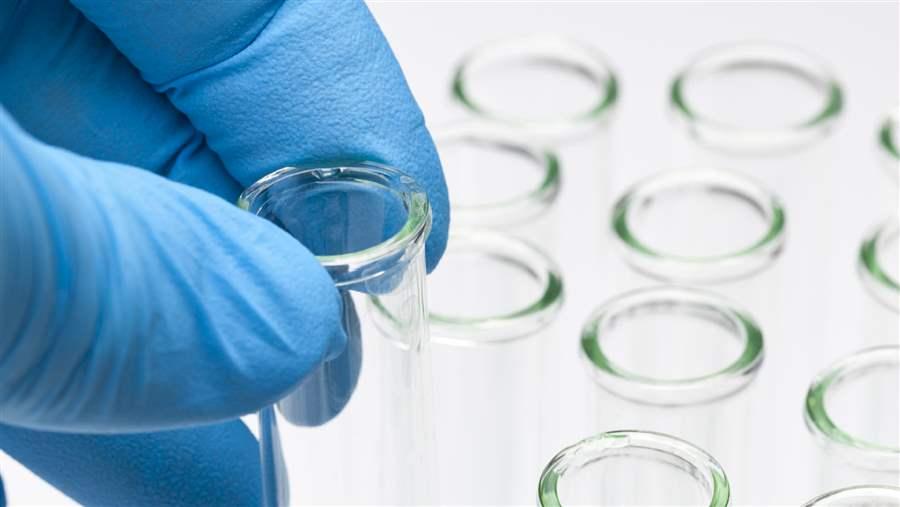The Importance of Better Drug Design for Antibiotic Innovation
Guidelines needed to help find, tailor molecules that can beat tough superbugs

Gram-negative pathogens are among the most serious microbial threats in the United States, particularly for health care-associated infections. Providers are running out of options to treat some of the most dangerous and life-threatening infections caused by these bacteria.
© iStockphoto
In February 2017, the National Institute of Allergy and Infectious Diseases (NIAID) and The Pew Charitable Trusts co-hosted a workshop for scientists to share ideas for tackling one of the most significant barriers to antibiotic discovery: finding and designing molecules that can enter and remain inside Gram-negative bacteria.
Gram-negative pathogens are among the most serious microbial threats in the United States, particularly for health care-associated infections. Providers are running out of options to treat some of the most dangerous and life-threatening infections caused by these bacteria. The recent news of a Nevada woman serves as a grim reminder of what is at stake.
The two-day workshop brought together leading academic, industry, and government experts representing a breadth of disciplines to propose strategies to address this problem and drive new antibiotic discovery. The group identified the types of research tools and information that are needed to spur innovation–priority areas outlined in Pew’s report A Scientific Roadmap for Antibiotic Discovery and that were also the focus of a recent NIAID funding opportunity.
Priorities stemming from the workshop include the following action items:
- Create a platform that enables the scientific community to better access, share, and use information. Participants generally agreed that establishing a collaborative information-sharing platform for existing and prospective data and information would help advance the discovery of antibiotics that can attack Gram-negative bacteria and would jump-start new innovation.
- Establish an antibiotic discovery “society” or virtual consortium. A cohesive group of scientists interested in antibiotic innovation could represent the unique perspectives of the field, set milestones, and track progress toward common goals over time. Additionally, such a group could help diversify the community of researchers working to address key barriers to antibiotic discovery and cultivate the next generation of antibiotic discovery scientists.
- Build momentum by tackling key research priorities in a systematic way. While a number of ongoing research efforts support antibiotic discovery, important barriers remain unresolved. The establishment of issue-specific working groups to tackle these barriers (e.g., development of new technologies to measure the entry of molecules into Gram-negative bacteria; creation of a collaborative information-sharing platform to share information and knowledge) with targeted goals and approaches could help drive progress.
Carolyn Shore works on The Pew Charitable Trusts’ antibiotic resistance project.








